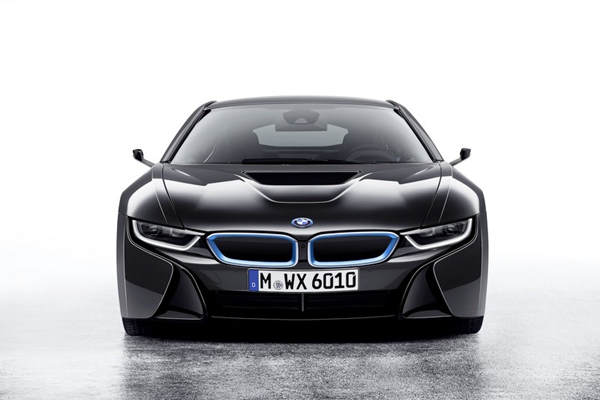
宝马在CES消费电子展上发布了i8 Mirrorless概念车。该车的侧后视镜被两个后视摄像头所替代,这两个摄像头安装在经过空气动力学优化的支架上,可有效降低风阻。而在后挡风玻璃的上边缘,这款车配备了第三个摄像头。就是这三个高清摄像头承担起传统汽车内外后视镜的功能。宝马表示,这样的设计比传统的车内和车外后视镜能更大限度的提升可视角度。车外三个摄像头拍摄的图像经过处理合成,最终会显示在在车内一块高分辨率的液晶显示屏上,它拥有比传统后视镜更大的后视角度,而且不会像传统后视镜那样存在很多盲区。这套系统不仅仅用来显示,其还具备预警功能。该系统会自动对拍摄的图像进行评估,推测可能发生的危险,并会发出警报,例如显示警告标识等,类似于现在很多中高端车型上搭载的变道辅助系统警示。除了i8 Mirrorless,宝马还发布了i3 Extended Rearview Mirror概念车。宝马并未透露该车更多细节,只是表示,该车的摄像头安装在车顶,内后视镜改为一块液晶屏,用来显示车顶摄像头拍摄的画面。
BMW i8 Mirrorless concept unveiled at CES
The Consumer Electronics Show continues as BMW has taken the wraps off thei8 Mirrorless concepts.
Starting with the i8 Mirrorless concept, the model's side mirrors have been replaced by two rearview cameras which are mounted on aerodynamically optimized holders. The concept also has a third rearview camera that is located on the upper edge of the rear windscreen.
The images from the three cameras are combined into a single image that is displayed on a high-resolution screen that replaces the traditional rearview mirror. BMW says the resulting image provides a greater viewing angle than can be obtained from traditional interior and exterior mirrors.
The use of a digital rearview mirror also enables warning signals to be displayed when appropriate. As an example, the mirror can warn drivers who are about to change lanes that a vehicle is approaching in the intended lane.
Besides introducing the i8 Mirrorless concept, BMW unveiled the i3 Extended Rearview Mirror concept. The company didn't have much to say about the model but confirmed it has a camera mounted on the roof of the vehicle. Images from the camera are overlaid on the interior mirror to "significantly" extend the driver’s field of vision.